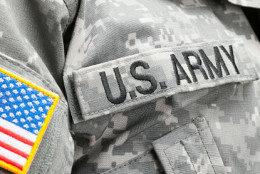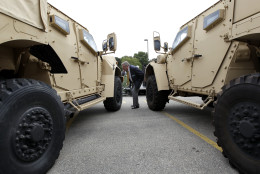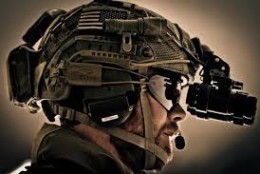Army
-
The Army's top electronic warfare officer says the service has done a good job of rebuilding its personnel following 20 years in which the Army had no meaningful EW program, but still lags in training and tools.
December 02, 2015 -
The Army is evaluating five years of data to study suicide. The data is both affirming and in some cases disproving what the Army knows about its suicide-prone soldiers. Randy Lane is the division chief of the analytics assessment and systems division at the Army Resilience Directorate. Wendy Lasko is the program manager of the Army Suicide Prevention Program, and Kenneth Cox is the scientific liasion for the Army STARRS program. On Federal Drive with Tom Temin, they tell Federal News Radio reporter Nicole Ogrysko about the data points they collected. The first voice you hear is Lane's.
November 30, 2015 -
Predictive analytics are changing the way the Army thinks about its training and programs to combat suicide — and other adverse factors that might impact a soldier's readiness. The service wrapped up a five-year study, called Army STARRS, this past summer.
November 30, 2015 -
Richard Lieberman, a consultant and retired attorney, warns government contractors not to begin work until they really have a contract.
November 24, 2015 -
Congress decided yesterday what programs will get a haircut in freeing up $5 billion in defense spending. Among the programs is the Long Range Strike Bomber and defense readiness increases.
November 03, 2015 -
Congress will rework the Defense authorization act to conform to budget deal parameters if it cannot garner enough votes to override the President’s veto.
October 29, 2015 -
The Army is shrinking down to about 450,000 soldiers. Congress isn't likely to approve another round of base realignment and closure, but Federal News Radio's DoD reporter Jared Serbu tells In Depth with Francis Rose the Army has adopted a different strategy to get its base footprint in line.
October 20, 2015 -
The Joint Light Tactical Vehicle program has dragged on for nearly a decade, with bidders spending millions and millions just for run-off prototypes. No wonder there's a protest.
October 19, 2015 -
The annual Doughboy Award recognizes infantrymen for their outstanding contributions to the U.S. Army infantry. It's also the highest honor bestowed by the Chief of Infantry. Ret. Command Sgt. Maj. Jeffrey Mellinger is an aircraft design liaison at Bell Helicopter, and one of three winners of this year's award. He told Federal Drive host Tom Temin more about what winning the Doughboy means.
October 19, 2015 -
The service is implementing one of the few alternatives it has to a base realignment and closure (BRAC) round: moving soldiers and civilians out of its oldest buildings and shuttering them.
October 19, 2015 -
With the convention wrapped up, here's a list of major factors the Army is tackling, and what they're doing to improve them.
October 19, 2015 -
The Army works continuously to improve on a basic piece of gear, namely the helmet on top of a soldier's head.
October 16, 2015 -
Hari Bezwada, the chief information officer of the Army’s Program Executive Office-Enterprise Information System, said he’s taking measured approach to migrate five ERP systems to a shared services provider.
October 16, 2015 -
The Army's acquisition chief says program testing takes too long and needs to be streamlined. She says that industry's help may be the best way to solve the problem. Federal News Radio reporter Scott Maucione has more.
October 16, 2015 -
The Army is redesigning how soldiers can continue their education in the civilian sector.
October 15, 2015














